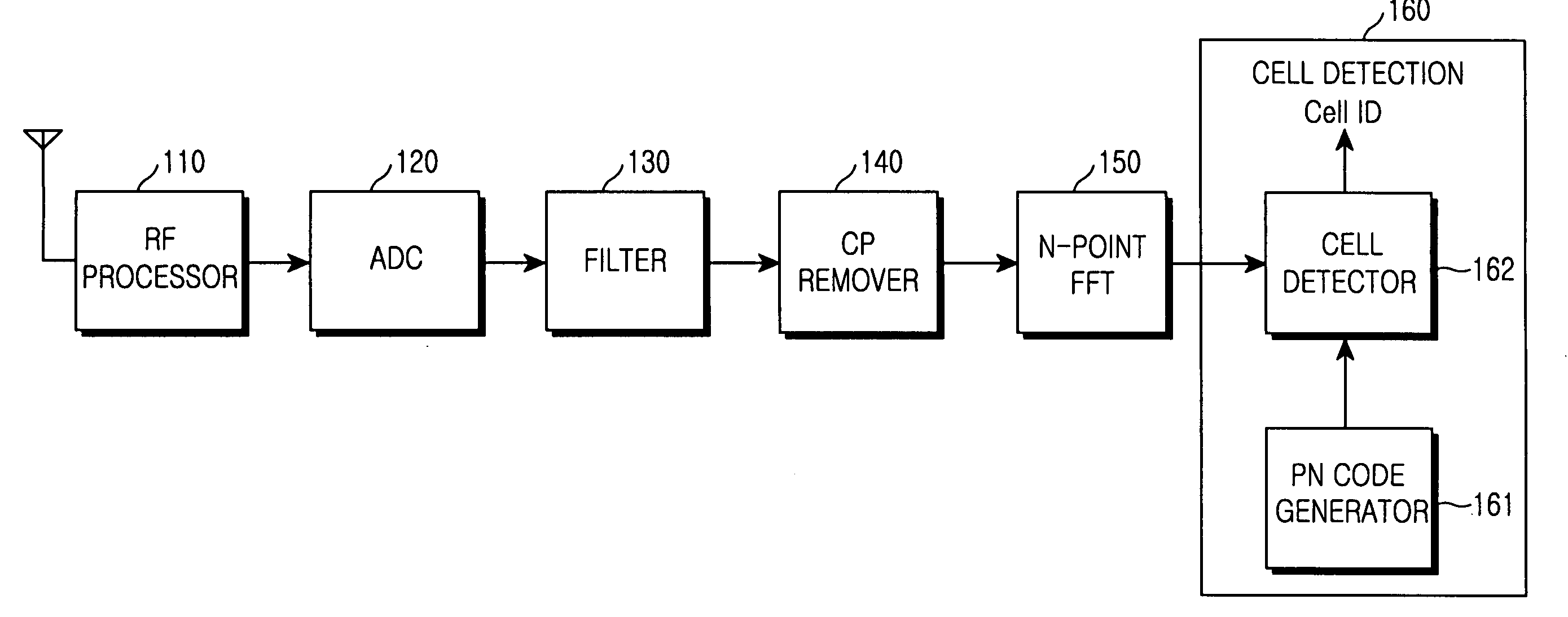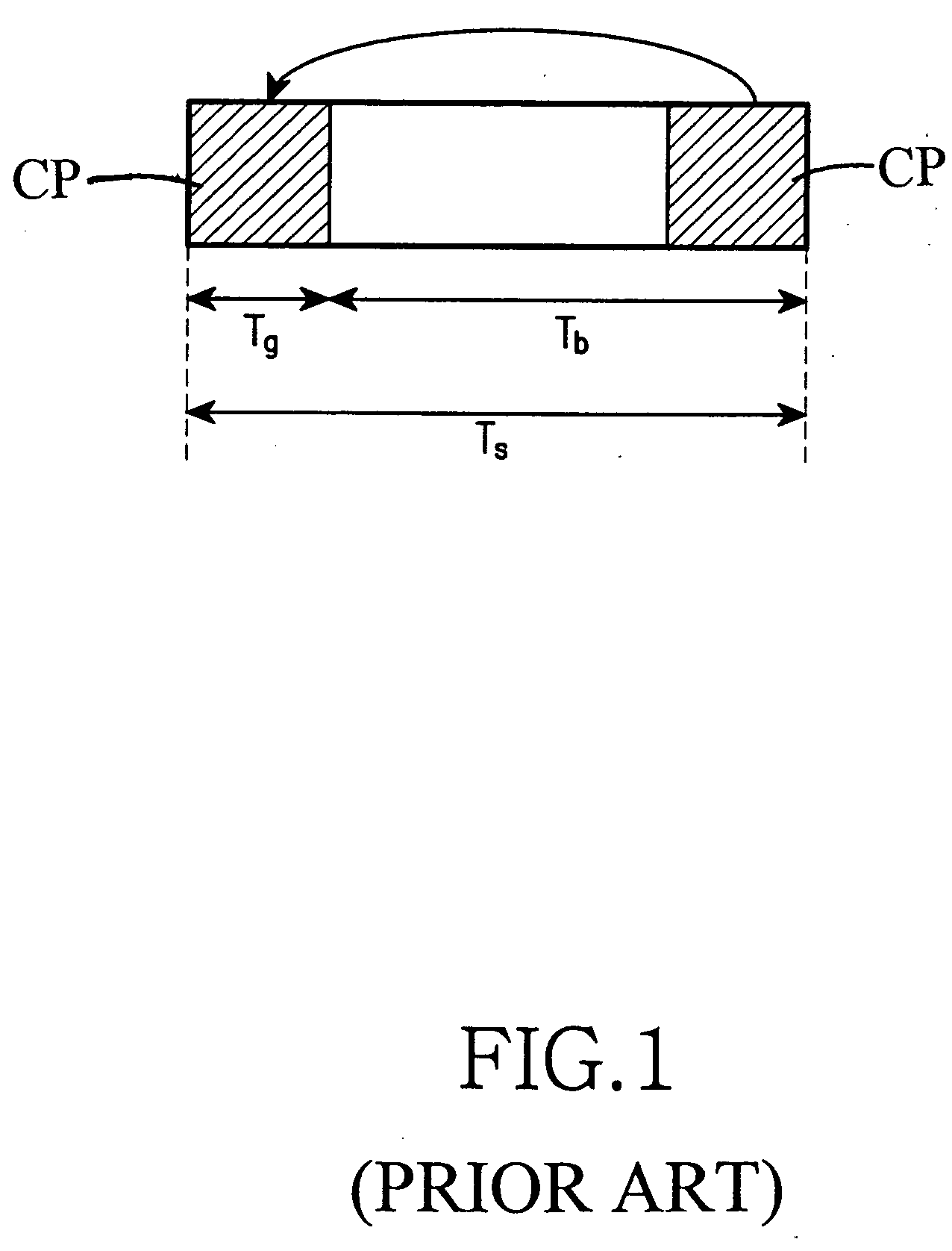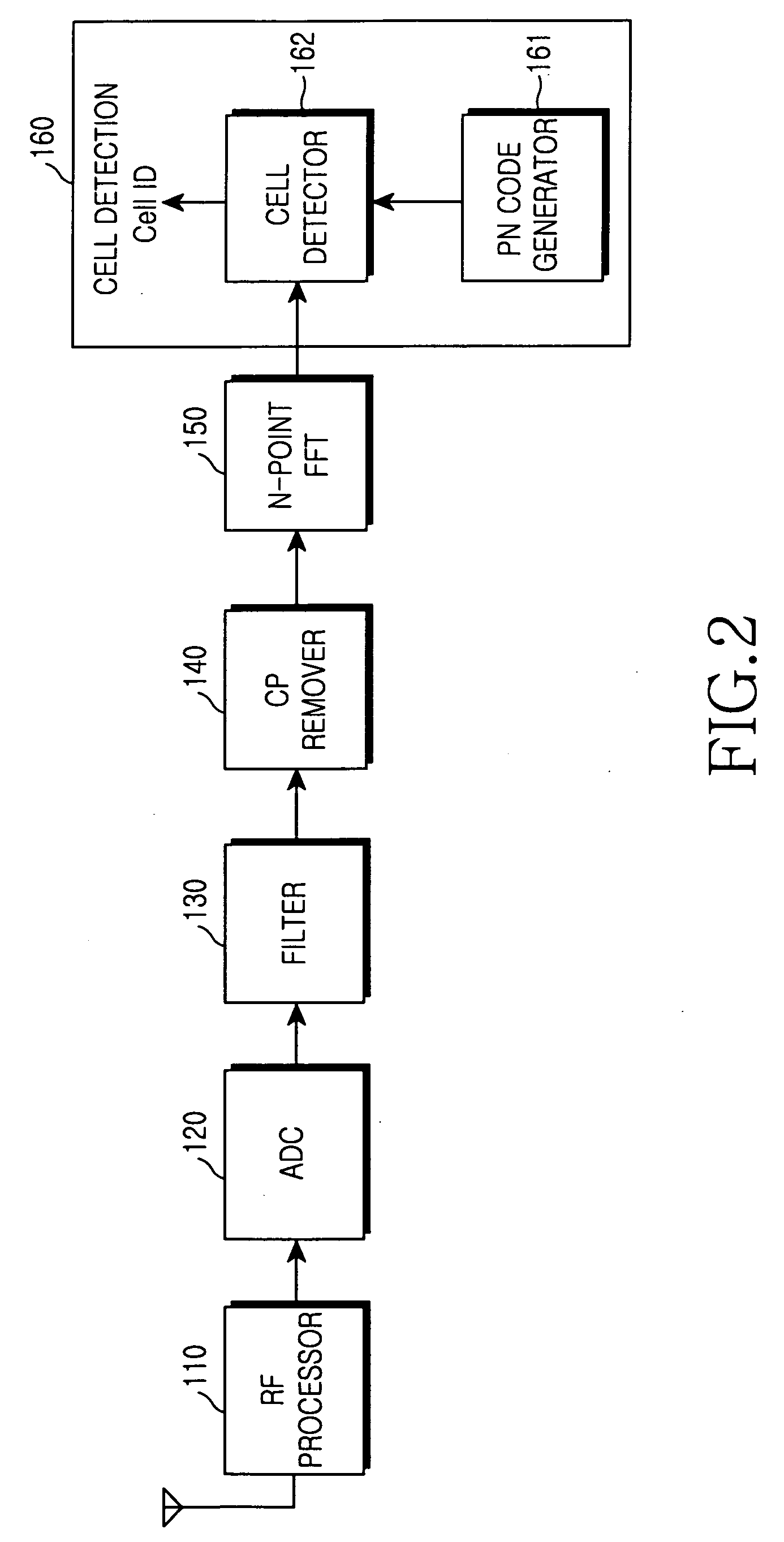Method and apparatus for detecting a cell in an orthogonal frequency division multiple access system
a technology of orthogonal frequency division and multiple access, applied in the field of method and apparatus for detecting a cell in an orthogonal frequency division multiple access (ofdma) system, can solve the problems of increasing the number of calculations and the difficulty of mobile stations to acquire such information at the beginning of communication
- Summary
- Abstract
- Description
- Claims
- Application Information
AI Technical Summary
Benefits of technology
Problems solved by technology
Method used
Image
Examples
first embodiment
[0051]FIG. 4 is a flowchart illustrating a cell detection operation in a frequency domain according to the present invention. Referring to FIG. 4, in step 400, a cell detection unit 160 receives data from a FFT unit 150. In step 401, the cell detection unit 160 sets both a cell identifier ‘i’ and a sector identifier ‘j’ to 0. In step 403, the cell detection unit 160 generates a PN code corresponding to the cell identifier ‘i’ and the sector identifier ‘j’ through a PN code generator 161. The generated PN code is a code used for determining whether it is synchronized with a base station's PN code where a CP is removed from received data. The CP refers to an interval where interference between a current OFDM symbol and an OFDM symbol delayed due to multiple paths occurs. By removing this interval, it is possible to cancel interference between OFDM symbols.
[0052] In step 405, the cell detection unit 160 converts a time-domain signal into a frequency-domain signal through IFFT. Because ...
second embodiment
[0056] Hitherto, the cell detection method using the cell detection algorithm in the frequency domain has been described in the first embodiment of the present invention. Next, a cell detection method using a cell detection algorithm in a time domain will be described in the present invention.
[0057] A cell detection algorithm in a time domain can be effectively implemented using circular cross-correlation rather than general cross-correlation. A description of this cell detection algorithm will be made below.
[0058] A correlation between a time-domain signal si[n] of a cell and its time delay can be expressed as Equation (13). Assuming that a length N of a frequency domain and a signal si(k) have the same size A (PSK signal) and a time-domain signal obtained by performing N-point IDFT thereon is si[n], a time-delayed signal si[n-τ] and the signal si[n], if a circular cross-correlation therebetween is calculated, are orthogonal with each other: ρ[n]=∑m=0N-1si[m]si*[(m-n)N]=A2δ...
PUM
 Login to View More
Login to View More Abstract
Description
Claims
Application Information
 Login to View More
Login to View More - R&D
- Intellectual Property
- Life Sciences
- Materials
- Tech Scout
- Unparalleled Data Quality
- Higher Quality Content
- 60% Fewer Hallucinations
Browse by: Latest US Patents, China's latest patents, Technical Efficacy Thesaurus, Application Domain, Technology Topic, Popular Technical Reports.
© 2025 PatSnap. All rights reserved.Legal|Privacy policy|Modern Slavery Act Transparency Statement|Sitemap|About US| Contact US: help@patsnap.com



